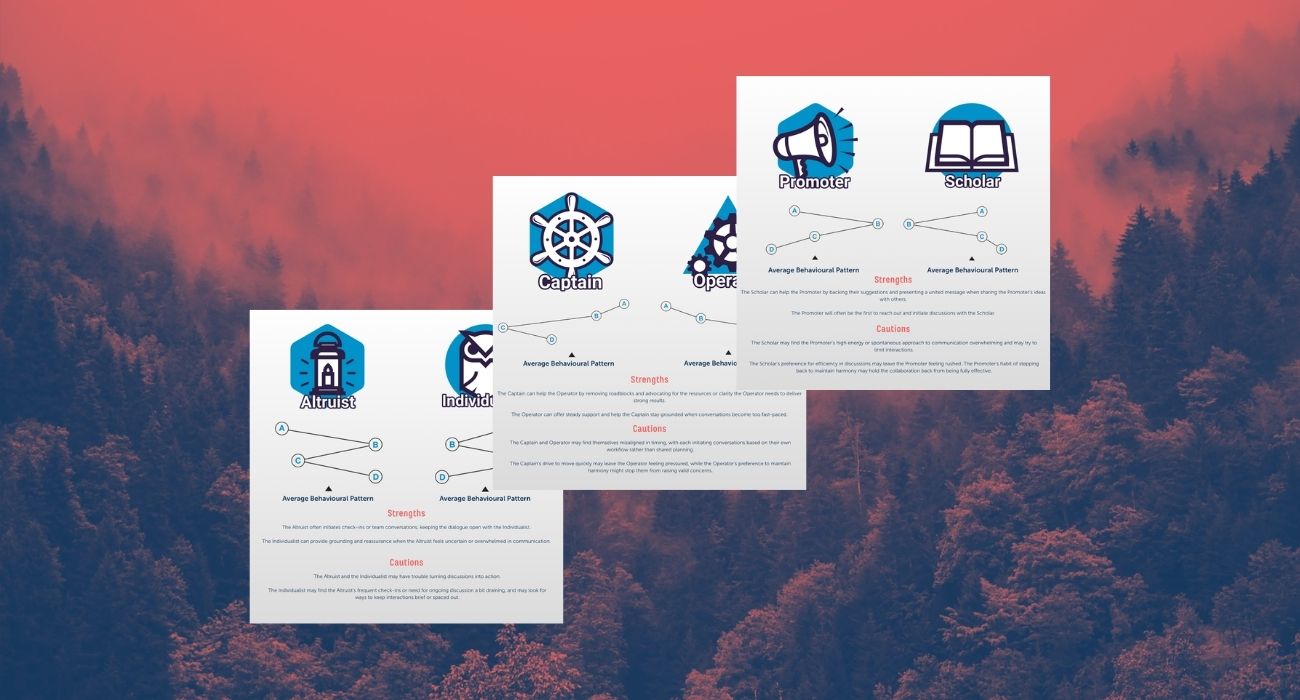In a typical workplace, it’s typically expected that everyone conform to the rules. After all, these guidelines are what companies and businesses are made the most of–a list of regulations, forms, and structures that govern both the people and work, allowing everyone to coexist, regardless of background or department.
Described by The Predictive Index as the drive to conform to rules and structures, the Formality drive is the last of the four factors drive behaviour along with dominance, extravertedness, and patience.
For high-formality people, rules aren’t seen as a hindrance at all; in fact, that structure is what allows them to visualize a clear sense of direction, giving them the confidence and comfort to move forward. It’s important for high-formality employees since they perceive the world to operate strictly two ways: right and wrong–and they wouldn’t be caught dead doing the latter.
Most managers will figure out a way to convey what “right” looks like whether they’re aware of it or not, making issues less likely to arise between them and their high-formality direct report.
But judging that you clicked on the title of this article, you’re likely dealing with someone who is a low-formality type. You know, the one who makes you think about pulling rank every now and then just to get them to do the things the way you want.
But before you get yourself in heaps of trouble, we’ll save you the hassle of mending ruined workplace dynamics. Feel free to apply the following pieces of advice the next time you deal with people who seem to live by the phrase “Rules are meant to be broken.”
Your authority does not impress
Yup, you guessed it. Using your authority as a means to influence can only get you so far until you’re faced with a low-formality type. Low-formality people are simply unimpressed by rank, authority, or seniority.
However, this isn’t to say they are disrespectful by nature, as much as they just aren’t motivated to conform to rules–yours or otherwise.
So how do you get them to “do what you want?” Well, simply by cutting them a bit more slack to “be who they are.” Basically, having opportunities to do their own thing or do things their way is the best motivation you can provide. Give them the end goal or big picture and let them create their own path to go forward.
Throw the script of the window
As you dump a bit of your ego out the window from our first tip, you might as well throw the script while you’re at it. Low-formality employees operate best unscripted and prefer a more casual and spontaneous approach. They’re also comfortable with uncertainty and are glad to just “go with the flow.”
Placing a bit of faith in their potential is the best way to manager their non-conformist style. Understand that low-formality types need freedom of expression, flexibility, and user friendly systems where they can take more risks in trying to figure things out on their own.
Don’t strive for perfection, strive for a great outcome
Lastly–and perhaps something we can apply more of in our day-to-day lives and not only when dealing with low-formality people–is keeping our sights on what really matters: the outcome.
Unfortunately, through our constant exposure in huge organizational cultures, we often times have allowed ourselves to get way too caught up in the system, making sure we check each and every box on the list. What low-formality people are teaching us is that there is something bigger that matters more than the details.
While it goes without saying that no one likes a micromanager, you’ll be setting yourself up for disappointment if you try to pull one on a low-formality type. For them, it’s not about how well you prefer things done as they think more along the lines of “Tell me what the end goal is and I’ll make sure we get there.”
So, before you allow your emotions to get the better of you, try to take a step back and see the bigger picture: everyone has a unique behavioural mix and all come with their own quirks, which in turn, come with their own benefits and drawbacks.
If you take them all at face value, you might think that acting out and whipping people into shape is a special card granted to you as a manager, but then you couldn’t be more wrong.
More than anything elsse, your job as a manager is to ensure each individual is in the best position they can be in to produce the best results they can make.
Interested to know your Patience drive? Take the FREE Behavioural Assessment Test from The Predictive Index so you can find out for yourself here.
Together with tailored trainings and workshops, resource materials, and expert consultation, Red Wolf Group provides a full-circle talent optimisation approach that can help businesses and teams of all sizes understand workplace behaviours better.
For more inquiries, email me, Alicia Lykos, personally at alicia@redwolfgroup.com.au, or call 0414687071. You can also leave us a message.
Featured Articles

Leveraging the Predictive Index to enable start-up Tquila to scale amidst rapid growth
The Challenge: Tquila at the time comprised of 15 talented individuals about to embark on an ambitious journey to scale its operations rapidly. Intending to reach 80 employees within a few years, the company faced the critical challenge of not only expanding its…

Duncan Solutions achieves remarkable results through Leadership Development and The Predictive Index
Duncan Solutions are an Australian-owned company delivering unified parking and payments solutions for municipalities, private operators, and merchants requiring a managed, electronic payment solution. The organisation was experiencing specific leadership challenges…

3 Capabilities Ever Manager Must Master
Most managers don’t fail because they don’t care. They fail because they were never shown how to succeed. We see it all the time. High performers are often stepping into management roles without clear expectations, adequate support, or targeted development. These are…

Why Doctors on Demand Chose PI (and Red Wolf Group) to Scale Smart
The Challenge: When Kirsty Garrett stepped into her role as the founding CEO of Doctors on Demand in 2019, the mission was clear: to build and scale a digital healthcare business that meets rapidly growing demand. What wasn’t clear was how to do that without burning…

Simplus designs high-performing teams and improves employee experience with The Predictive Index
Sqware Peg (Now Simplus) was Australia’s first Salesforce partner and an established leader in digital transformation and advisory across the entire suite of Salesforce offerings. They have been transforming businesses with Salesforce technology since 2004. Simplus…

Conversations with Confidence: How Waterline is Growing Future Leaders the Right Way
At Red Wolf Group, we often talk about the risks of the “Accidental Manager”, the technically equipped individual who suddenly finds themselves leading and managing others, without ever being prepared or trained for the shift in responsibility. So, what does it look…

Opposites Attract: Why Your Workplace Conflict Might Be Your hidden superpower
Are you finding yourself clashing with a teammate who seems to approach every task completely differently to you? They might be focused on the big picture while you’re all over the detail. They may be quick to make decisions while you need research and evidence to…

Globus utilises The Predictive Index in onboarding and training so new employees thrive
Globus provides first-class travel and more than 90 years of touring expertise and experience to budding holiday-makers and travellers. Since 2019, Globus has effectively harnessed the power of the Predictive Index (PI) to recruit team members, onboard and…

Conversations with Confidence: How Leadership Can Shape Workplace Success
Do you know the impact poor communication skills can have on leadership? When leaders struggle to communicate effectively, it can hinder collaboration, erode trust, and stifle innovation, ultimately affecting team performance and organisational success. Strong…

Leveraging The Predictive Index Management Strategies
Effective leadership requires flexibility and the ability to meet individuals where they are, rather than imposing a one-size-fits-all approach
Take the FREE Behavioural Assessment
Fill up the form to begin
Oops! We could not locate your form.

